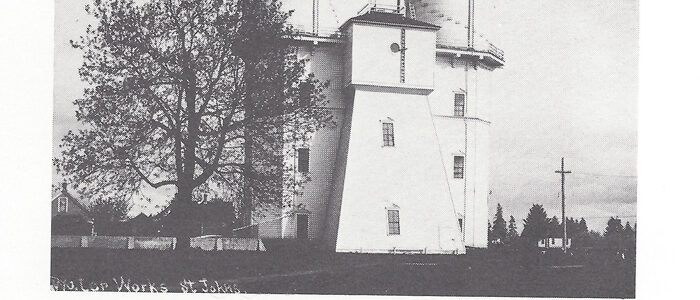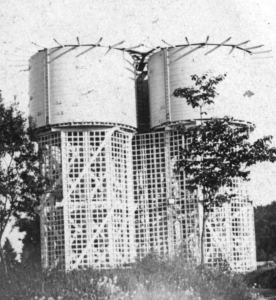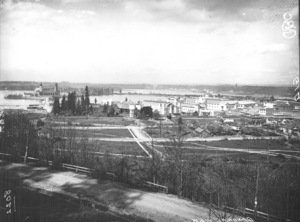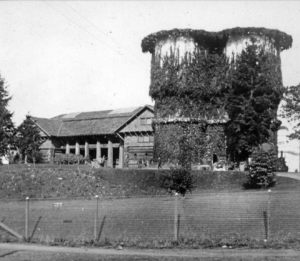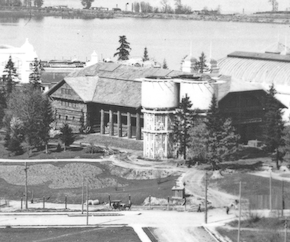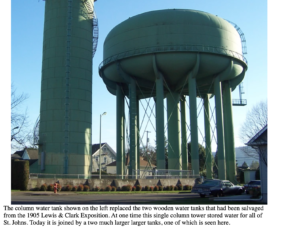Fun Fact #73
Question: To what city did the 1905 Lewis & Clark Exhibition water tower relocate?
Answer: St. Johns

My fascination with water towers was kindled during my Place Matter employment. One of the nominated locations was a PWA era public pool, in Harlem NYC. The local narrative iterated by elders was prior to the construction of the PWA pool was learning to swim in rooftop water towers prior to attempting river swims. I have since pestered friends of friends who habited in water towers converted into dwellings and hotels, as well as being drawn to fictional horror stories and researching water tower tragedies like the collapse of the West Bluff Water Tower in Peoria, Illinois. The 1905 Lewis & Clark Exhibition Water Tower was highlighted in Fun Fact #50 in 2019. It was years later that I encountered information that the water towers were relocated.
A Gallery Of Water Tower Images
The first five are of the towers when they were next to the Forestry Building. The green space alien tower is the most recent replacement in St. Johns.
In the early 1900s city residents clamored for additional water towers to be built in downtowns as a tool for firefighters. Portland’s Fire Chief Campbell articulated to the press that many costly NW fires could have been avoided if there were more water towers. “Every large city has a water tower as part of the equipment of its fire department.” (9-14-1907 Oregonian p 10). Campbell died in the collapse of the Union Oil Plant building as a result of a fire in 1911. Chief David Campbell is honored along with 76 other Portland Firefighters at Fireman’s Park on SW 18th & Burnside.

The City of St. Johns like their neighbor Portland saw the need for additional water towers. Sy. Johns acquired the Lewis & Clark Fair Water Towers that were no longer required after the 400-acre fairgrounds closed on October 15. 1905. This post includes an image of the original towers in 1905 as well as an image of a greatly altered when the round towers were reassembled and added on to an existing rectangular tower. Cassandra Bird published an article for the St. Johns Review as well as the letter to the editor below advocating for preservation:
Although Portland prides itself on oddities, few things are keeping us weird these days. In St. Johns, a green water tower represents pride of place, and the city is trying to sell it. The city says the tank at North Willamette Boulevard and Oswego Street is on track to be “disposed of” because it is no longer “of use.” But it is used as a location marker, it shows our history, it is replicated on postcards, and it defines our skyline.
Oregonian Letter to the Editor 3-24-2021 by Cassondra Bird, Portland
The modern green water tower and the land under it sold in June 1922 for $450,000 according to an April 22, 2023 Willamette Week article “Why Is Portland Selling Off Its Water Tanks?”. Cities rise and fall based on access to water. St. Johns is no different reemerged with Portland in 1915 of independence mostly for access to drinking water after a decade of population growth. Fun Fact #68 touched on why St. Johns seceded from Portland in 1898.

